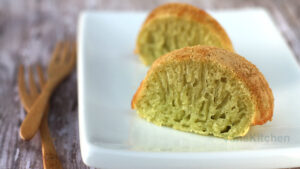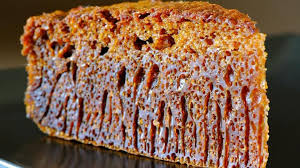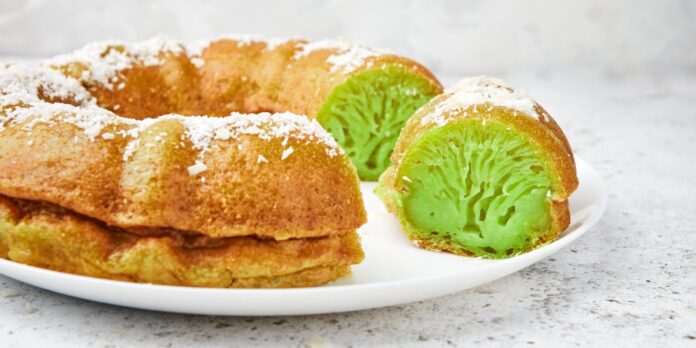Vietnamese Honeycomb Cake, also known as “Bánh Bò Nướng,” is a delightful traditional dessert deeply rooted in Vietnamese culture. This unique cake, characterized by its distinctive honeycomb-like structure, has been enjoyed for generations and holds a special place in Vietnamese culinary traditions.
Introduction to Vietnamese Honeycomb Cake
Vietnamese Honeycomb Cake is a beloved delicacy that holds cultural significance in Vietnamese cuisine. It’s often served during festive occasions such as Lunar New Year celebrations, weddings, and family gatherings. The cake’s intricate texture and delightful flavor make it a favorite among locals and visitors alike.
Ingredients Needed
The main ingredients for Vietnamese Honeycomb Cake include rice flour, tapioca flour, coconut milk, sugar, and yeast. Additional ingredients such as pandan extract or coconut cream can be added to enhance the flavor and aroma.
Preparation Steps
To make Vietnamese Honeycomb Cake, start by mixing rice flour, tapioca flour, sugar, yeast, and coconut milk to form a smooth batter. The batter is then poured into special molds, traditionally made from bamboo or metal, resembling honeycomb cells. The cake is then baked until it develops a golden-brown crust while maintaining its soft and spongy interior.
Serving Suggestions
Vietnamese Honeycomb Cake is typically served warm, either as a standalone dessert or accompanied by a cup of Vietnamese coffee or tea. For a modern twist, it can be served with a drizzle of coconut cream or condensed milk for added sweetness.
Variations and Adaptations

While the traditional recipe remains popular, there are various adaptations and variations of Vietnamese Honeycomb Cake available. Some bakers experiment with different flavors such as chocolate, pandan, or taro, catering to diverse tastes and preferences. Additionally, there are gluten-free versions available for those with dietary restrictions.
Health Benefits
Despite its indulgent flavor, Vietnamese Honeycomb Cake offers some nutritional benefits. Coconut milk provides healthy fats, while rice flour and tapioca flour offer carbohydrates. In any case, balance is key because of its sugar content.
Cultural Significance

In Vietnamese culture, food plays a central role in celebrations and gatherings, and Vietnamese Honeycomb Cake is no exception. It symbolizes prosperity, happiness, and togetherness, making it an essential part of various festive occasions.
Tips for Success
To achieve the perfect texture and flavor, it’s essential to follow the recipe closely and pay attention to details such as mixing the batter thoroughly and baking at the correct temperature. Additionally, using high-quality ingredients ensures the best results.
Popular Vietnamese Desserts
While Vietnamese Honeycomb Cake holds a special place in Vietnamese cuisine, there are several other popular desserts worth exploring. From delicate puddings to refreshing fruit-based treats, Vietnamese desserts offer a diverse range of flavors and textures.
Conclusion
In conclusion, Vietnamese Honeycomb Cake is a delightful dessert that embodies the rich culinary heritage of Vietnam. Its unique texture, delicious flavor, and cultural significance make it a must-try for anyone exploring Vietnamese cuisine.
FAQs
What is the origin of Vietnamese honeycomb cake?
- Vietnamese Honeycomb Cake has its origins in Vietnamese culinary traditions and has been enjoyed for generations.
Can I make this cake without a special mold?
- While traditional molds are preferred for authenticity, you can use muffin tins or other baking pans as alternatives.
Is Vietnamese honeycomb cake gluten-free?
- Traditional recipes may contain rice flour and tapioca flour, making them gluten-free. However, it’s essential to check the ingredients for any potential sources of gluten.
How long does it typically take to bake?
- The baking time may vary depending on the size of the molds and the oven temperature but generally ranges from 45 minutes to an hour.
Can I store leftovers?
- Vietnamese Honeycomb Cake can be stored in an airtight container at room temperature for up to a few days. Warm before serving for the best taste and surface.

